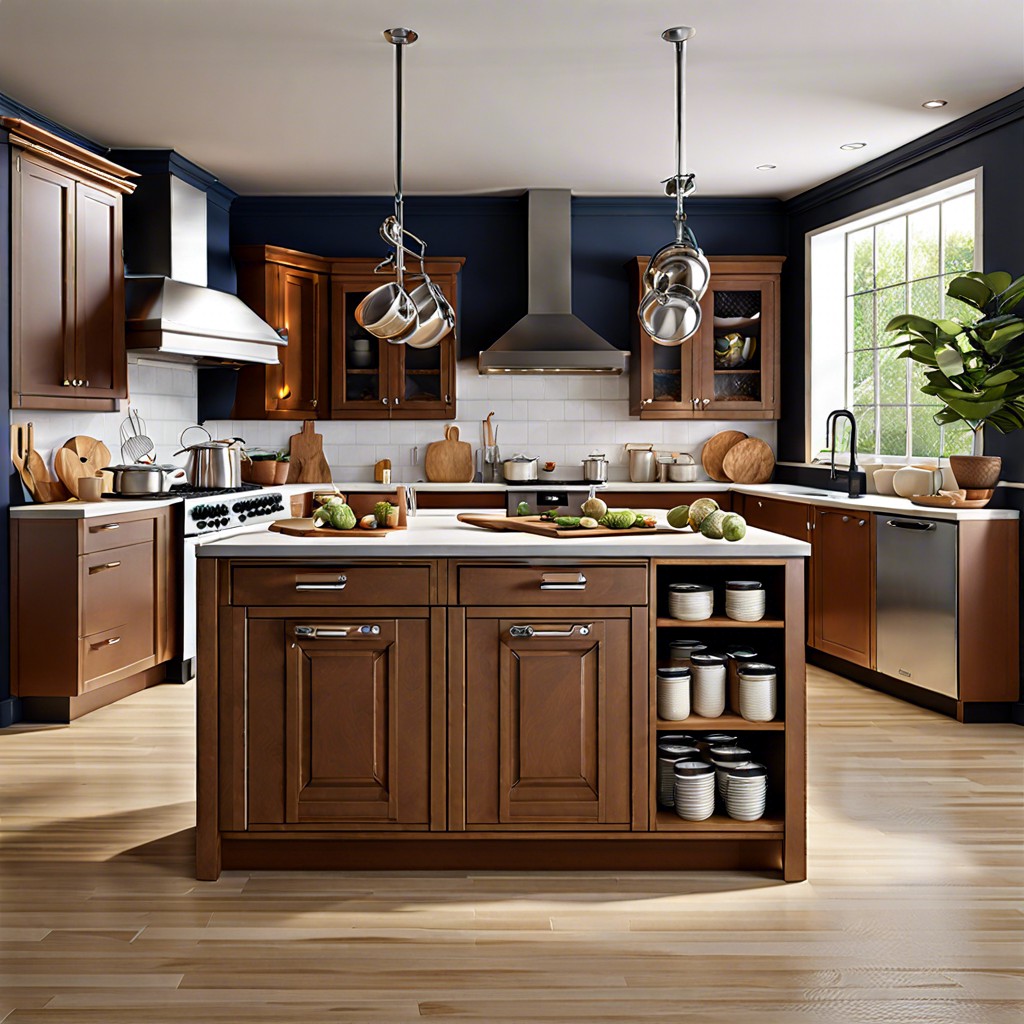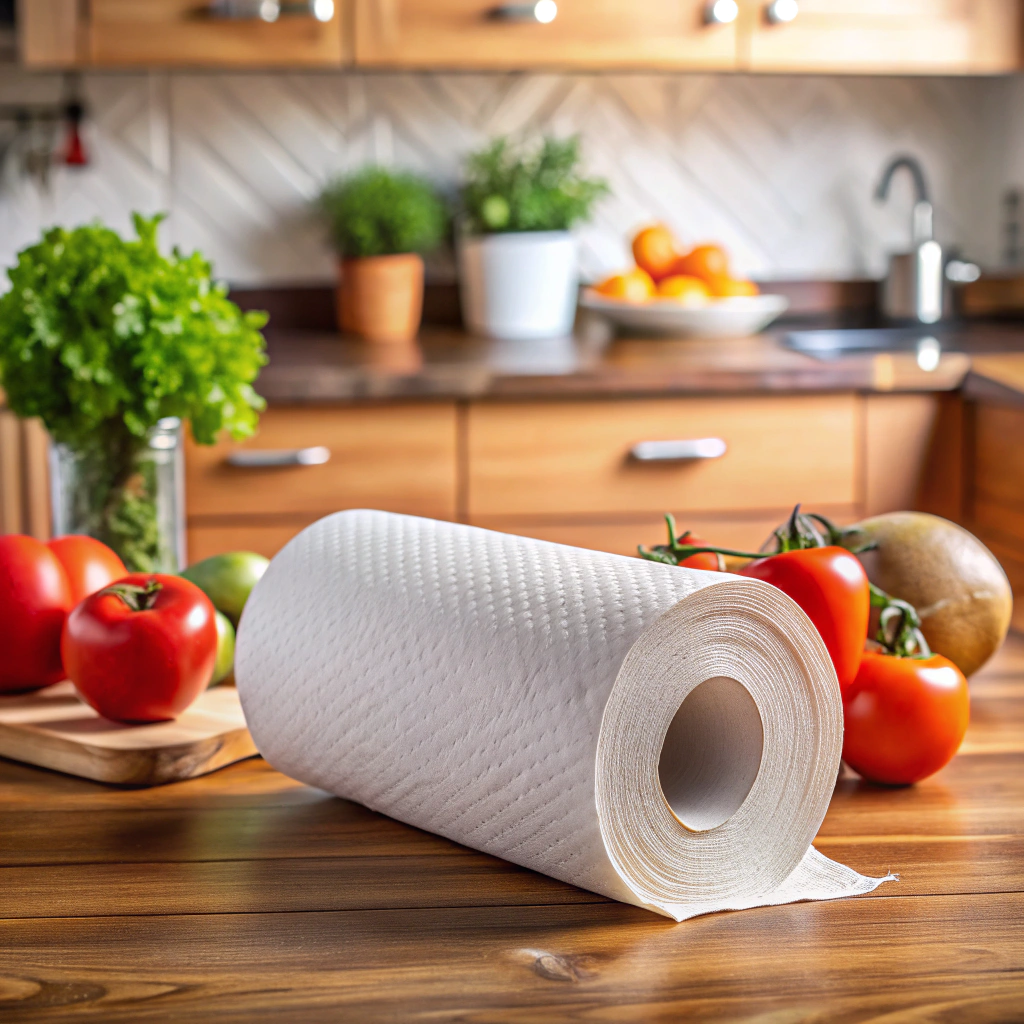Last updated on
Discover how to choose the best smallwares for your kitchen to boost efficiency and fun in your culinary adventures.
Key takeaways:
- Choose essential smallwares: chef’s knife, mixing bowls, cutting board, measuring spoons/cups, tongs.
- Consider material: stainless steel, plastic, wood, nonstick, cast iron.
- Prioritize durability: stainless steel, bamboo, silicone, cast iron.
- Look for versatility: multipurpose tools, stackable bowls, dual-purpose measuring cups, cast-iron skillet.
- Opt for easy cleaning: non-stick surfaces, dishwasher safe, seamless designs.
What's Inside
Essential Smallwares

You simply can’t live without some kitchen smallwares. They’re the backbone of your culinary adventures. Start with a sharp chef’s knife. Trust me, chopping veggies with a blunt knife is like cutting butter with a spoon. Not fun.
Mixing bowls in various sizes are crucial. From whisking eggs to mixing salad, they handle it all. Another must-have is a sturdy cutting board. Preferably wood or plastic – leave the glass boards for someone you don’t like.
Measuring spoons and cups are your best friends when precision is key, like baking. And a good set of tongs? They’re practically an extension of your hand. Perfect for flipping, tossing, and sometimes even opening stubborn jar lids.
Lastly, don’t forget a trusty spatula, a box grater, and a peeler. Simple, but they save you loads of time and effort.
Material Composition
When it comes to your kitchen gear, what they’re made of can make or break your culinary adventures. Stainless steel is a kitchen MVP. It’s durable, resistant to rust, and super easy to clean. For example, stainless steel mixing bowls won’t react with acidic ingredients, so go ahead and whip up that lemon vinaigrette with confidence.
Plastic can be a hero too. It’s lightweight, versatile, and often budget-friendly. However, avoid using it with hot foods unless it’s labeled as food-safe at high temperatures. You don’t want your spoon curling up like a scared cat!
Wood is great for tools like spoons and cutting boards. It’s gentle on knives and adds a rustic charm to your kitchen. Just remember to hand wash and oil regularly to keep it from drying out.
Nonstick materials are another consideration. They make clean-up a breeze but can scratch easily. Opt for silicone utensils to avoid damaging those precious coatings. And hey, who doesn’t love an easy clean-up?
Your pots and pans might come in cast iron, which is basically the heavyweight champion of the kitchen. Perfect for conducting heat evenly, just beware that it’s a bit high-maintenance. Keep it seasoned and it’ll last longer than your last diet plan.
Durability
Nobody wants to buy a spatula today only to have it break tomorrow while flipping pancakes. When choosing kitchen smallwares, opt for quality and longevity.
Think stainless steel for those tools that need to withstand a daily beating, like your trusty tongs or a slotted spoon. Stainless steel can handle high temperatures and won’t rust.
For cutting boards, bamboo is both durable and sustainable. It resists knife marks better than plastic and doesn’t require the maintenance of hardwood.
In the realm of utensils, silicone is your non-stick best friend. It’s flexible, heat resistant, and won’t warp over time. Perfect for stirring, flipping, or even scraping bowls clean.
Cast iron skillets are the tanks of the kitchen; nearly indestructible and improve with age. Just don’t drop one on your foot.
Investing in durable smallwares up front saves pennies and headaches. So, next time you’re shopping, remember: quality now means same tool tomorrow (and the day after that).
Versatility
Imagine having one tool that does everything except dance the cha-cha! Versatility is key when selecting your kitchen smallwares.
Look for multipurpose tools. A high-quality chef’s knife can slice, dice, and chop, making it more useful than a drawer full of single-purpose gadgets.
Go for stackable mixing bowls. They save space and can double as salad bowls, making your kitchen less cluttered and more efficient.
Consider measuring cups that work for both dry and liquid ingredients. Fewer dishes to wash means more time enjoying your culinary creations.
Invest in a sturdy cast-iron skillet. It can sauté, bake, and sear. Talk about a kitchen superhero!
Incorporate nesting items. Measuring spoons that fit into each other mean less drawer chaos and easier access.
Don’t overlook utensils with built-in multi-functionality. A spatula that can flip pancakes and scrape batter? Yes, please.
A little versatility goes a long way in making your kitchen both functional and fun to cook in.
Ease of Cleaning
No one wants to spend more time cleaning than cooking. When choosing your kitchen smallwares, opt for items that save you scrubbing time. Non-stick surfaces are your best friends. Think silicone spatulas and non-stick baking mats; they practically clean themselves. Stainless steel, while a superstar in durability, shows every fingerprint and water spot, making it a more high-maintenance choice.
Dishwasher-safe items are a huge plus. Check the labels, because not everything can stand up to the magical powers of your dishwasher. Detachable parts? Even better. A blender that comes apart for easy cleaning can save you countless awkward hand contortions.
Lastly, consider seamless designs. Gadgets with fewer nooks and crannies harbor fewer mystery crumbs and gunk. Multi-tools that combine several functions into one can also streamline your after-cooking cleanup, because why wash three things when you can wash one? Lazy, meet efficient.
Safety Features
Nonslip handles might just save your fingers one day. Ever tried slicing a tomato with a knife that wiggles as much as a puppy at bath time? It’s a recipe for disaster. Go for tools with good grips.
Look for heat-resistant materials. Silicone-tipped tongs, anyone? They’re great for flipping your bacon without melting halfway through the fry.
Locking mechanisms are a blessing for things like kitchen shears. Pop them in a drawer without the fear of stabbing yourself next time you make a grab for the measuring spoons.
Rounded edges on tools like spatulas and scrapers prevent accidents. Your omelette will thank you too, not just your fingers.
Lastly, ensure electrical gadgets have UL (Underwriters Laboratories) certification. It’s like a badge of reliability, indicating they’ve passed some rigorous safety tests.
Cost-Effectiveness
When it comes to spending your hard-earned money wisely in the kitchen, a little foresight goes a long way.
First, think about long-term use. While it might feel good to snag a cheap whisk at the dollar store, it won’t feel so hot when it falls apart mid-whip. Investing in quality can actually save you money over time.
Next, consider multi-purpose tools. A vegetable peeler that can also julienne? Score. Look for items that can perform multiple functions to save both space and cash.
Don’t forget about brand reputation. Sometimes paying a bit more for a trusted name means you’re paying less for replacements down the road.
Check for warranties. Items with a solid warranty can give you peace of mind and lessen the financial blow if something does go wrong.
Finally, keep an eye out for sales and discounts. A little patience can reward you with top-notch tools at a fraction of the cost. Happy cooking without breaking the bank!




